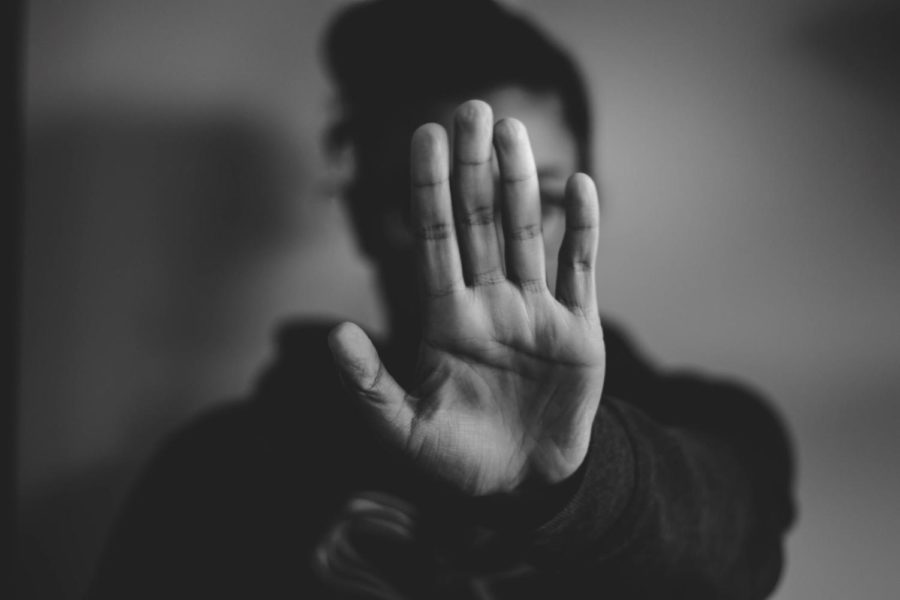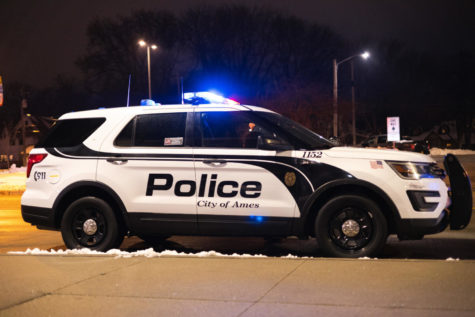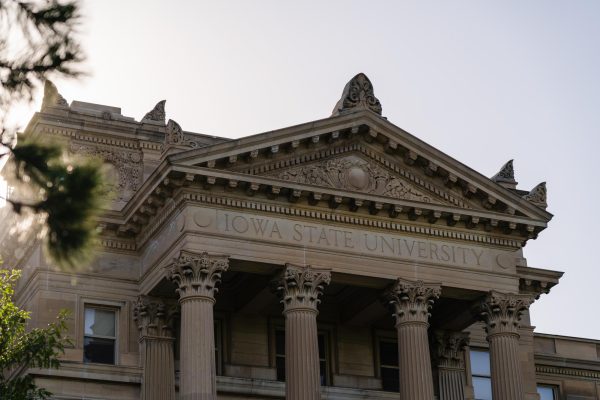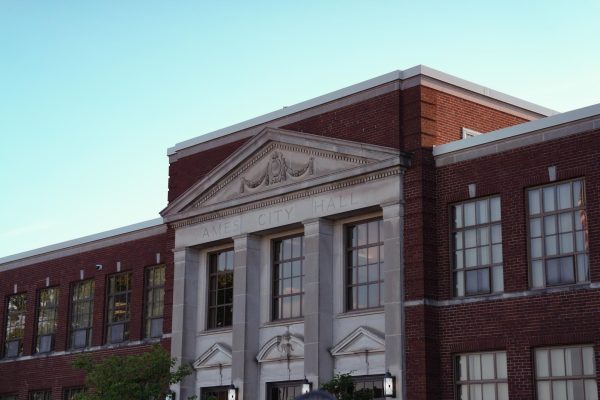‘She didn’t throw me away’: Destigmatizing human trafficking survivors
Courtesy of Nadine Shaabana/Unsplash
Human trafficking victims are of all different identities and backgrounds, according to Michael Ferjak, a retired law enforcement professional with over 40 years of service.
Trigger warning: This article mentions sexual violence and human trafficking.
A young woman wakes up in a vehicle, unaware of where she is and how much time has passed. She is led into a building, and she hears kids laughing, crying and screaming. She reaches a room and is handed a robe and ordered to take off her clothes. When she refuses, she gets punched in the face.
That night, around 56 men and women raped her within 12 hours.
Heather Brown, 32, was this young woman and is now a survivor and advocate of human trafficking awareness. She was trafficked starting at the age of 18 from 2008 to 2019.
“At the end of all of that they brought us to a room and they handed me this bag of money and said, ‘You need to count this,’” Brown said. “I was in shock. I didn’t really know how to respond. My body kind of just shut down. There was close to $60,000 in that bag.”
Human trafficking is the transporting, harboring and recruiting of a person through force, fraud or coercion for the purposes of sex trafficking and labor trafficking, according to Alissa Stoehr, an assistant teaching professor at Iowa State University. Stoehr teaches an honors seminar on human trafficking as well as a higher level women and gender studies class on the topic.
A common myth about human trafficking is that only women and girls can be victims and survivors, according to the Polaris Project’s website. However, Michael Ferjak, a member of the Story County Sheriff’s Department human trafficking response team, has witnessed a wide demographic of human trafficking victims.
In Ferjak’s experience, which includes 20 years of law enforcement focused on child exploitation and human trafficking, victims are of all different identities and backgrounds.
The youngest victim he helped was 8 months old, and the oldest was 65. They have been rich and poor; male, female and transgender; educated and uneducated; and with differing levels of drug usage, including no drug usage at all.
“Anyone can be influenced to date or be around or get into things that they normally wouldn’t if they have trust with the person,” said Anna Olson, a senior studying journalism and mass communication and a student in Stoehr’s human trafficking class.
Stoehr also said anyone can be trafficked because it is not about sex but about taking advantage of people’s vulnerabilities.
Brown’s own story is different from the perception many people have of what human trafficking looks like.
Brown was a freshman at Morningside College in Sioux City, Iowa, in 2008. She met a man at the gym who would go on to learn everything about her: her goals, dreams and aspirations. By November, she thought he was the man she wanted to marry.
Brown said her boyfriend learned everything about her but never shared anything about himself.
When she went to a New Year’s Eve party with him to meet his family, she witnessed him getting raped by his father. She later discovered that none of these people were actually his family.
Brown said she wanted to help her boyfriend out of the situation he was in.
“I am that type of person. I will give you the shirt off my back,” Brown said. “I don’t like when people hurt.”
A month later, Brown was at her boyfriend’s apartment when his alleged dad showed up. His dad threw her against the wall, knowing she had witnessed the crime on New Year’s Eve, and he threatened her and her family.
He gave her a burner phone and ordered her to answer it whenever it rang and follow any directions she was given. Brown turned it off and ignored it for a couple of weeks. One day she was walking on campus, and someone linked arms with her and told her to go with them.
“People will say, ‘Why don’t you scream? Why don’t you run? Why don’t you do anything?’ It’s kind of like that fight, flight or freeze,” Brown said. “In that moment when it actually happens, it’s really hard to get anything out.”
Brown was brought to a building and sold to approximately 56 men and women within 12 hours. She said at this point she did not know it was trafficking, just that she was in a bad situation and in love with her boyfriend.
“There was at this point what you call that trauma bond. I thought I was gonna marry this guy,” Brown said. “I was pretty self-conscious, so having somebody take interest in me and be nice to me–I felt good.”
Trauma bonding is one of the largest barriers to helping people return to their original selves, according to Ferjak.
Brown was trafficked and sold while she continued to attend college and work a part-time job. She was also a resident assistant and student ambassador. Brown said she was forced to go to different hotels, truck stops, backseats of cars and businesses from about 10 p.m. to 3 a.m.
“I kind of just shut down and basically made up my mind that this was just the life that I was always gonna live,” Brown said.
Even after Brown graduated and moved away from Sioux City, the trafficking continued. Around 2012, she went to a Bible study and had the realization that what she was going through was human trafficking.
In February 2017, Brown met with Ruth Buckles, an advocate who had worked with multiple survivors.
“For the first time I wasn’t asked questions. I wasn’t judged, I wasn’t looked at funny; I was validated,” Brown said. “She just said, ‘I hear you, I’ve heard this before. There’s others that have lived the same experience.’’’
Brown eventually moved in with Buckles despite the fear and threats that continued to occur. Brown said her traffickers threatened her farm and tried to kill her animals.
“Ruth was persistent,” Brown said. “She didn’t give up […] she didn’t throw me away.”
The last time Brown was trafficked was the day after Thanksgiving in 2019 in Pleasantville, Iowa. She still receives threats here and there.
Brown said she harbors more anger about the whole situation now. Even though she is physically removed, there are still things that greatly affect her everyday life. She says triggers are still very real.
“Once the individual is out of it, that doesn’t mean that they’re free of it,” Ferjak said. “Sadly, it’s something that will stay with them the rest of their life. For better or for worse, it becomes part of their identity. You never really outlive it, but you learn to live with it.”
Dorothy’s House in Des Moines, Iowa, is a long term restoration program for survivors of human trafficking, exploitation and prostitution. They have helped over 60 women in seven years and house seven to eight women over the age of 18 at a time.
Dorothy’s House provides many services to survivors including addiction treatment, resources for mental and physical health, housing, job skill development, education advancement, legal assistance and help with debt management.
“I think the way that you prevent [human trafficking] from happening is to change the hearts of men who are willing to rape people for money, for drugs or for whatever they’re doing it for,” said Kellie Markey, the founder and director of Dorothy’s House.
Brown is not physically being trafficked anymore, but she still has long-lasting effects from her experience. She said she wishes people would see her as a mom, a college graduate and all the things that make up her identity instead of only a survivor of human trafficking.
“Once people know that you’re a trafficking survivor, all your other titles don’t matter anymore,” Brown said. “There’s a certain type of judgment that people have. They look at you, they pity you, they feel sorry for you or they don’t trust you.”
Your donation will support the student journalists of the Iowa State Daily. Your contribution will allow us to purchase equipment, send our student journalists to conferences and off-set their cost of living so they can continue to do best-in-the-nation work at the Iowa State Daily.











